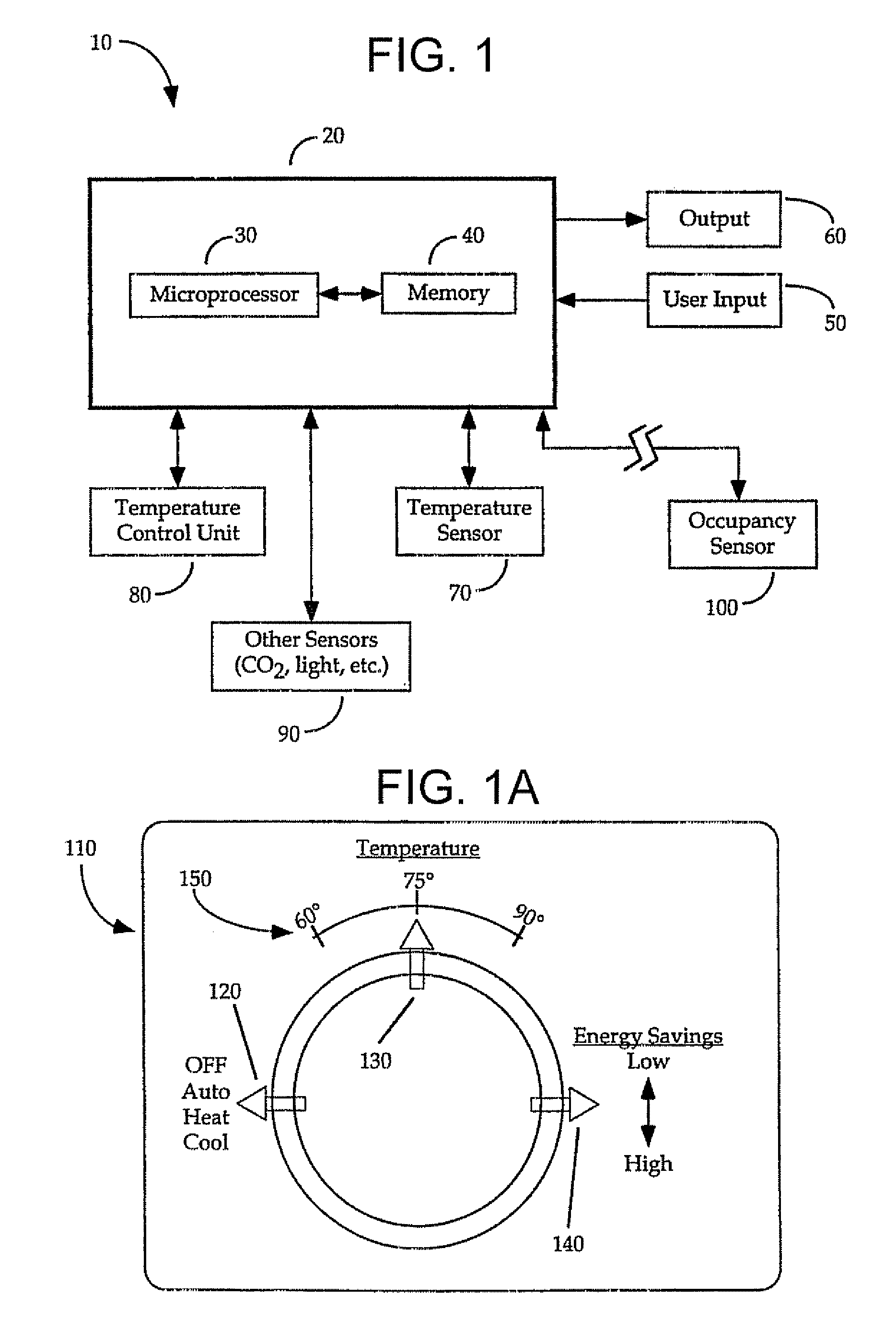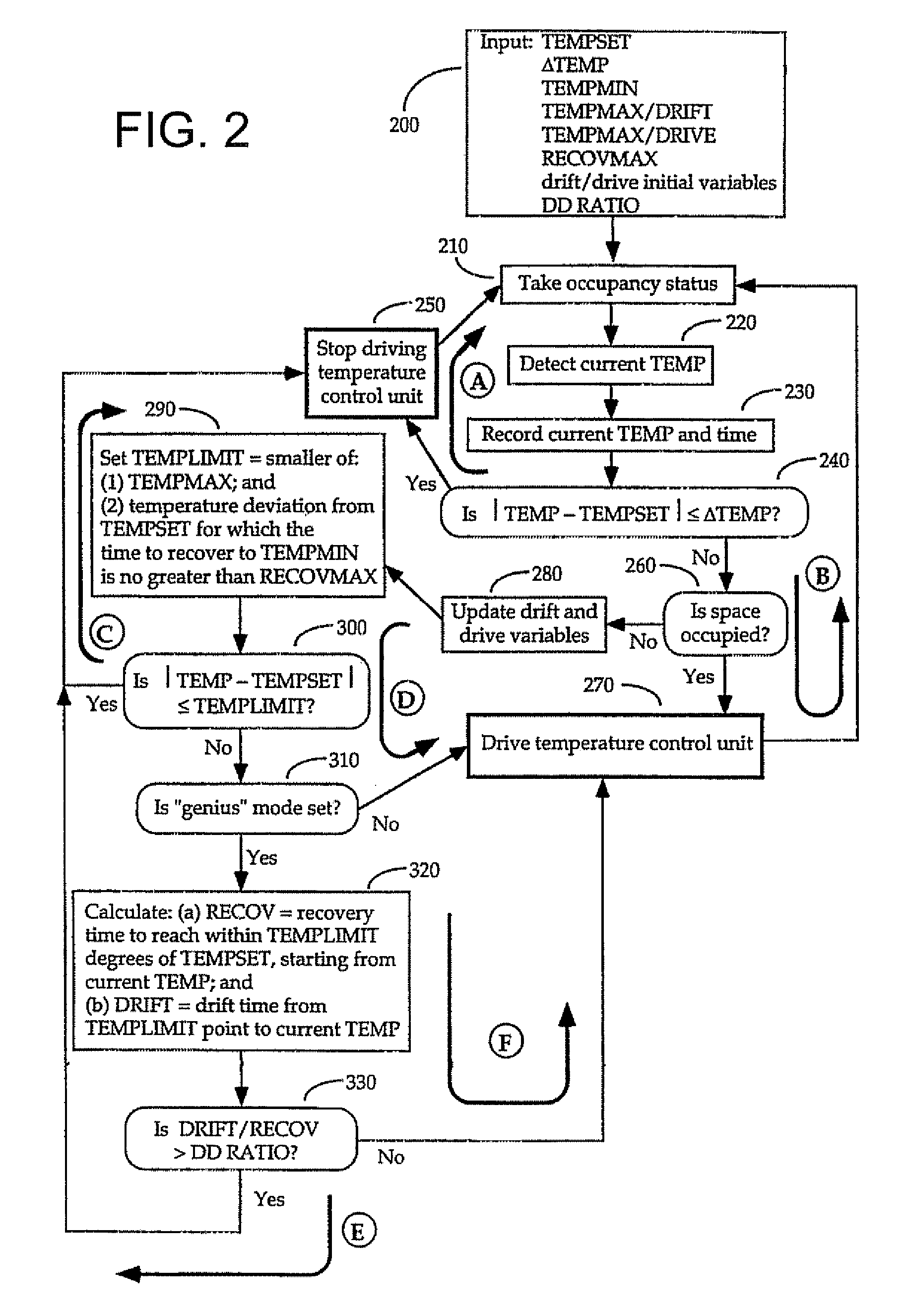System and method for selecting an operating level of a heating, ventilation, and air conditioning system
a technology of heating ventilation and air conditioning system, which is applied in the direction of heating types, lighting and heating apparatus, instruments, etc., can solve the problems of troublesome clock-thermostats, high energy consumption, and high energy consumption, and achieve the effect of reducing system strain and increasing efficiency
- Summary
- Abstract
- Description
- Claims
- Application Information
AI Technical Summary
Benefits of technology
Problems solved by technology
Method used
Image
Examples
Embodiment Construction
[0041]The present invention now will be described more fully hereinafter with reference to the accompanying drawings, in which preferred embodiments of the invention are shown. This invention may, however, be embodied in many different forms and should not be construed as limited to the embodiments set forth herein; rather, these embodiments are provided so that this disclosure will be thorough and complete, and will fully convey the scope of the invention to those skilled in the art. Like numbers refer to like elements throughout.
[0042]Embodiments of the invention are described herein in conjunction with thermostatic climate control systems capable of estimating recovery times in order to drive the temperature back to, or within range or, the user setpoint within a specified recovery time. However, it should be appreciated that systems and methods of embodiments of the invention may be used in conjunction with any temperature management or climate control system capable of driving ...
PUM
 Login to View More
Login to View More Abstract
Description
Claims
Application Information
 Login to View More
Login to View More - R&D
- Intellectual Property
- Life Sciences
- Materials
- Tech Scout
- Unparalleled Data Quality
- Higher Quality Content
- 60% Fewer Hallucinations
Browse by: Latest US Patents, China's latest patents, Technical Efficacy Thesaurus, Application Domain, Technology Topic, Popular Technical Reports.
© 2025 PatSnap. All rights reserved.Legal|Privacy policy|Modern Slavery Act Transparency Statement|Sitemap|About US| Contact US: help@patsnap.com



